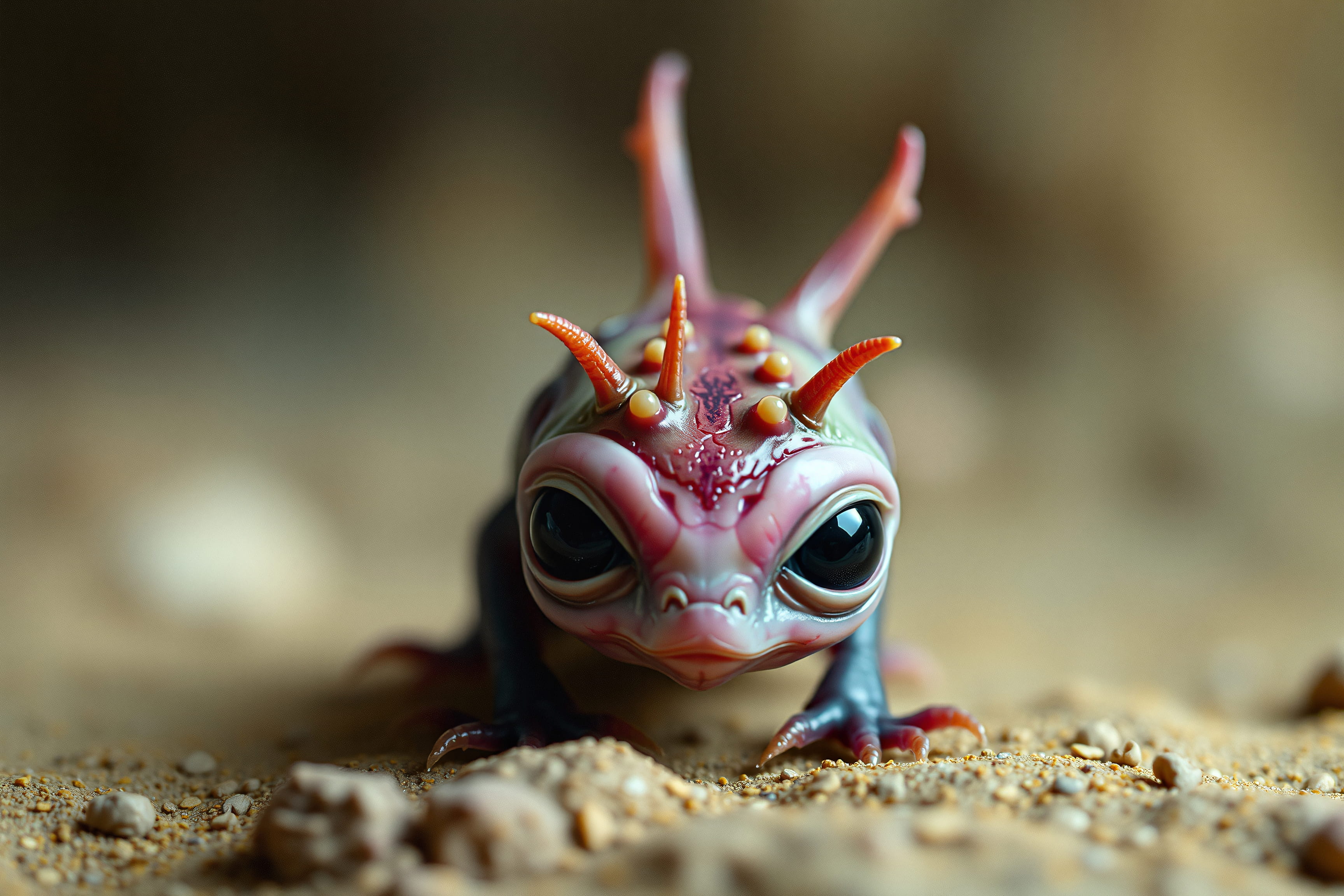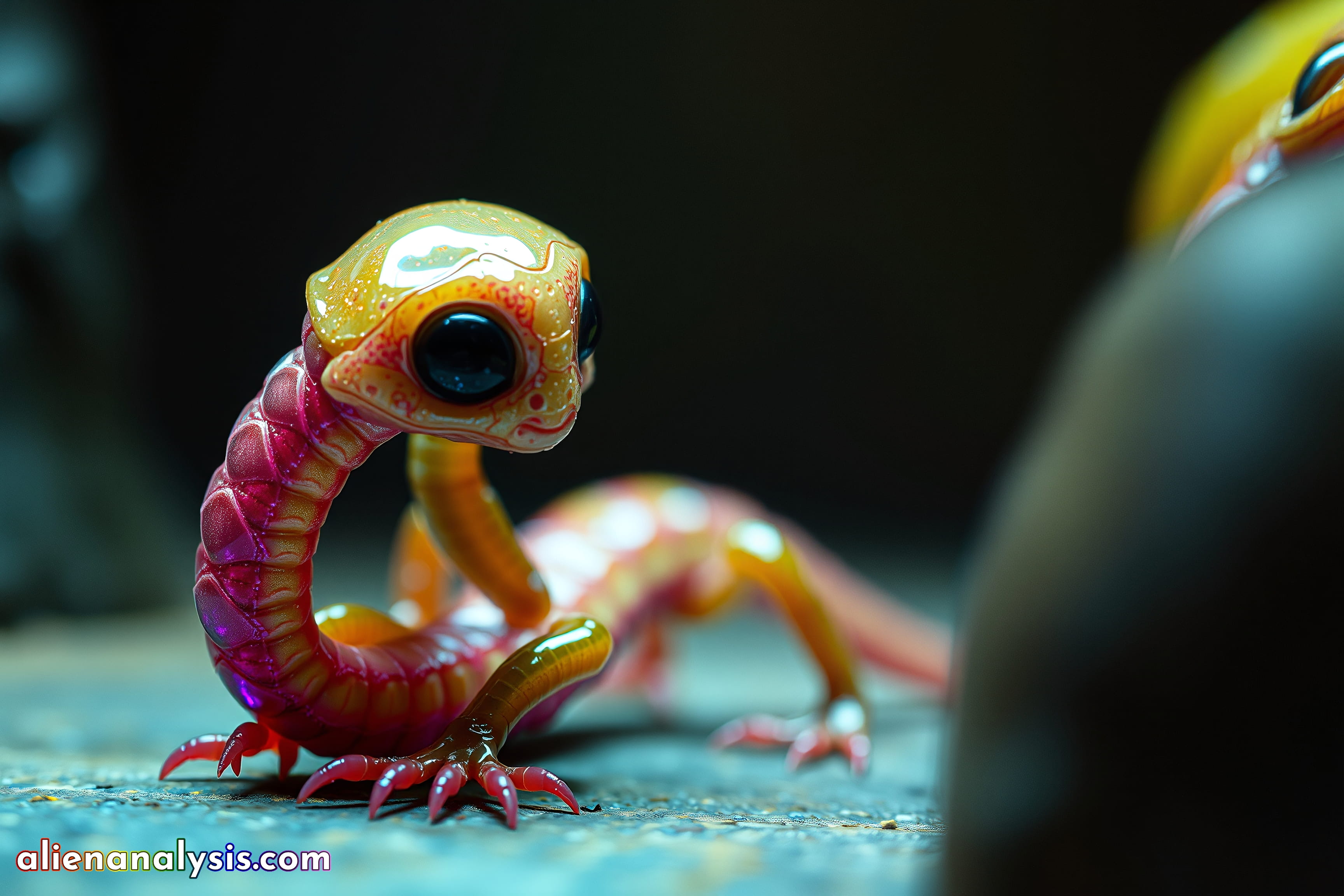
Serpentipoda chromatica

The entity in the image appears to be a young or juvenile member of a species that could be classified within the genus Serpentipoda chromatica, meaning "colorful footed serpent." This name reflects the creature’s serpentine body, limb structure, and vibrant coloration.
Morphological Characteristics:
Body Structure: The being has an elongated, flexible body covered in segments that suggest an exoskeleton or a tough, scaled epidermis. This segmentation allows for a high degree of flexibility, which is characteristic of species adapted to slithering or burrowing behaviors. The overall shape resembles that of a hybrid between a snake and a centipede, suggesting a highly adaptive mode of locomotion.
Head and Eyes: The large, rounded eyes dominate the head and are likely adapted for low-light environments, possibly underground or in dense vegetation. The eyes’ size indicates a reliance on vision for detecting prey or navigating through complex environments. The head is small and rounded, with a smooth, glossy surface that may be protective and help the creature maneuver through tight spaces.
Limbs: The being possesses multiple small, clawed limbs positioned along its body. These limbs are likely used for gripping surfaces, aiding in climbing, or anchoring the body while it moves through various terrains. The claws are sharp and possibly retractable, indicating a capacity for burrowing or climbing on rough surfaces.
Coloration: The vibrant coloration, with patterns of red, orange, and yellow, could serve several purposes. It might be aposematic, warning potential predators of toxicity or foul taste. Alternatively, the colors could be used in social signaling, possibly indicating the being’s developmental stage, health, or readiness to mate. The glossy, reflective quality of the skin might also play a role in thermoregulation or camouflage, helping the creature blend in with similarly colored environments.
Behavioral and Environmental Adaptations:
Habitat: Serpentipoda chromatica likely inhabits environments where flexibility and mobility are critical, such as dense forests, caves, or burrows. The segmented body and multiple limbs suggest a creature well-adapted to both subterranean and surface habitats. It may spend much of its life in burrows or among thick vegetation, where its coloration helps it avoid predators or attract mates.
Diet: The creature’s sharp claws and large eyes suggest it might be an insectivore or carnivore, preying on small organisms that it can catch or dig out of hiding places. Its body structure allows it to pursue prey in tight spaces, and its vision is likely tuned to detect movement in low-light conditions.
Communication: Given its striking coloration, this species may use visual signals as part of its communication repertoire, possibly during mating rituals or territorial displays. The creature’s segmented body might also produce sounds or vibrations as it moves, which could be a form of communication within the species, especially in environments where visual signals are less effective.
Conclusion:
The Serpentipoda chromatica represents a highly adaptable, visually striking species that thrives in environments requiring a combination of flexibility, stealth, and visual acuity. Its vibrant coloration and segmented, flexible body suggest a creature that has evolved to navigate complex, multi-layered habitats, from dense forests to underground burrows. This being’s morphology indicates it is likely still in a juvenile stage, poised to develop further as it matures, possibly growing larger or gaining additional physical adaptations that will enhance its survival and ecological role.